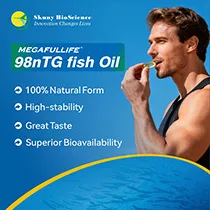Noom upgrades GLP-1 weight management app features as digital therapeutics gain US market traction
Weight management app Noom has revealed a major update to its GLP-1 Companion service to accompany and optimize popular GLP-1 drug therapies, which can cause temporary and long-term side effects like critical nutritional gaps and muscle loss. Aligning with the US FDA’s draft guidance, Noom offers tailored tools and content to support improved patient outcomes as a companion app for weight loss medications.
“The label on GLP-1 medications says they are to be used ‘in combination with a reduced-calorie diet and increased physical activity,’” says Noom CEO Geoff Cook.
“We’ve spent the last two years drawing on Noom’s deep expertise in behavior change to create the ultimate GLP-1 companion program to solve the medication’s twin challenges, persistence and muscle-mass loss, while also driving enhanced weight loss outcomes,” he details.
Preparing for PDURS
The company is preparing the New Expected Prescription Drug Use-Related Software (PDURS) Model, expected to be finalized later this year. This US FDA-backed model will allow pharmaceutical companies to pair software with their drugs, such as GLP-1 medications, to improve patient outcomes.
According to the FDA’s draft guidance, PDURS provides a practical pathway to add companion software to the label to promote patient outcomes and safety.
This regulatory development is highly relevant to industry as it signals a shift toward more integrated and technology-driven weight management approaches and chronic disease prevention strategies In this space, Kelker Pharma recently introduced Nutrilinq Genesis, touted as the “first science-backed” nutritional support system for GLP-1 therapy patients.
Noom expressed an appreciation of the new PDURS framework’s potential, “because it provides a way to put a software product on the drug label in an evidence-based way.”
“Having built Noom to be the ultimate GLP-1 companion, we believe the company is well positioned in the emerging PDURS landscape,” says Cook.
“With a number of GLP-1 medications in Phase 2 trials, we believe that the winning formula to stand out in a crowded landscape will be to combine medication with advanced behavior change to drive differentiated outcomes, while proving it with Phase 4 studies,” says Cook.
 Noom’s “PDURS-oriented” GLP-1 companion offers education tailored to GLP-1s.Improving nutrition tracking
Noom’s “PDURS-oriented” GLP-1 companion offers education tailored to GLP-1s.Improving nutrition tracking
The company’s “PDURS-oriented” GLP-1 companion offers education tailored to GLP-1s. Its resources highlight the importance of healthy habits and provide tips on managing their side effects.
The companion is equipped with a Med Tracker that issues reminders, a medication log and side-effect support. It offers protein-focused nutrition support to preserve lean mass through a photo meal logging feature.
Also, for lean muscle maintenance, the companion’s Muscle Defense exercise plan includes personalized movement goals and accessible resistance training workouts.
Noom aims to make meal planning more manageable and personalized with the Welli Meal Planner. This new AI-powered feature brings individual meal recommendations to life by leveraging members’ food preferences, dietary goals and current meal logs.
First-time users take a quick survey to share their dietary restrictions, favorite cuisines and available cooking time. Welli will present recipe suggestions in an interactive carousel format, complete with the recipe name, calories per serving and preparation time.
Consumer feedback on Welli’s food logging experience reveals users “enjoy a sense of support” throughout the journey, with many praising the personalized nature of the experience.
Noom is also rolling out Dynamic Calorie Goals, designed to make daily calorie targets personalized to each person’s unique needs. This tool adjusts calorie goals based on activity levels, logged workouts and AI body scan data.
Meanwhile, a new AI body scan calculates an individual’s Basal Metabolic Rate (BMR) with greater precision by incorporating lean body mass, fat mass and other metrics. Members can choose to use this BMR as the foundation for their calorie targets, which Noom says will ensure a “more personalized and effective” approach.
 Noom repeatedly found that people interested in starting a medicated weight loss journey expect to engage in “multimodal weight loss.”User research
Noom repeatedly found that people interested in starting a medicated weight loss journey expect to engage in “multimodal weight loss.”User research
Noom repeatedly found that people interested in starting a medicated weight loss journey expect to engage in “multimodal weight loss.”
A recent survey of US adults interested in weight loss found that 88% would like to build healthier habits alongside taking the medication.
The new app upgrades follow Noom’s launch of its GLP-1Rx service, which delivers GLP-1 medications directly to consumers’ doorsteps within seven days, which has seen “extraordinary engagement” among patients taking semaglutide.
Market research of GLP-1Rx patients cited by the company found 95% adhered to the medication, while 84% of prescribed patients engaged with in-app content and 56% used the app’s Med Tracker (where side effects can also be tracked).
Meanwhile, 56% engaged in meal logging, with an average of 35 meals logged in the first month.
Patients were found to log weight one to two times per week, on average, over the first eight weeks of treatment. They use Noom Move workouts an average of 6.9 times in the first month and 45% engage with side-effect support in Noom’s “Success Kit.”













